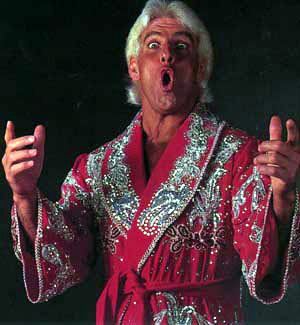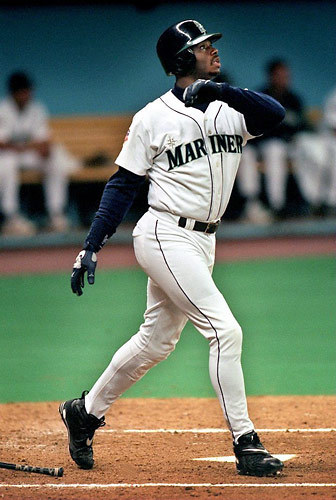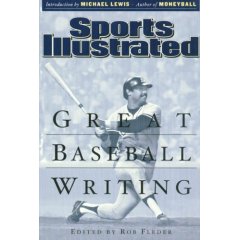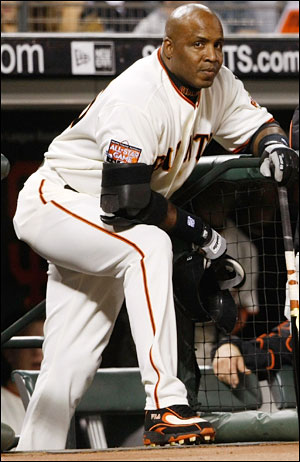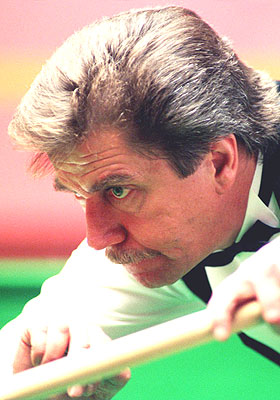Taking Care of Business
It has been three weeks to the day since I last posted on here, and for that, I am sorry.
It just couldn't be helped though - I’ve been very busy with my continuing work at Canada’s Sports Hall of Fame. The good news is that most of my work is now done, and the final stage should be completed in about mid-July.
My work hasn’t been limited to freelancing for the Hall of Fame though. I’ve been spending the summer doing pagination for the Canadian Press, as well as a few side projects.
The first of these projects was for my friend Victor Bachmann, a professional mixed martial artist based in Edmonton. I had interviewed him years ago for a Canadian fighting magazine. Unfortunately, they never had the space for the article and its references quickly became dated.
In addition to his prizefights, Victor is a teacher at the Hayabusa Fighting Training Centre, and he needed a profile for the gym’s website. Remembering the story I’d written about him, Victor asked me to re-write it for him.
I’ve never had to re-write an article so dramatically before, but I think I really sharpened this piece up.
My other project was for HockeyPrimeTime.com, a website that covers the National Hockey League.
Their editor, J.P. Hoornstra, asked me to do a preview of the Northeast Division’s draft possibilities and I happily complied.
It was a lot of fun looking at the different needs and draft picks of the hockey teams I am most familiar with: the Boston Bruins, the Buffalo Sabres, the Montreal Canadiens, the Ottawa Senators and the Toronto Maple Leafs.
The next few weeks are all laid out for me - I’ll be doing a preview of the free agent prospects of the Northeast Division teams for HPT.com and completing my work with Canada’s Sports Hall of Fame. Fortunately, I’ll also have more time to do blog posts.
Professional Wrestling Makes Life Better
Obviously, I love sports. This website and my choice of career stand as a testament to this. I’m not very particular either. Baseball, hockey, basketball, football, soccer, lacrosse, the Olympics, it’s all good. Heck, even artistic cycling has made its way on to this blog.
But there’s an ugly stepchild in the sports family that I’ve also got some love for: sports entertainment, better known as professional wrestling.
Yes, it’s obviously fake. But so are most movies and television shows. Professional wrestling is also really corny and clichéd, but that doesn’t diminish the athleticism and skill of its performers.
In fact, there are at least three things about professional wrestling that anyone can appreciate.
You may not know who Ric Flair is, but I promise you that you’ve heard his trademark celebration. It’s a staple of every arena and stadium across North America.
For the uninitiated – Ric Flair has won the world heavyweight championship in various promotions 21 times and is a legend of the business. A lot of the standard ideas in wrestling stem from his career.
One of his signature moves is a knife-edged chop across his opponent’s chest, usually followed by him yelling “WOOO”. The crowd then responds with a chorus of “WOOOs”. It’s now to the point that when any pro wrestler chops someone the crowd will honour Flair with the call.
It’s seeped into popular culture as well. Whenever a goal is scored by the Carolina Hurricanes on home ice Ric Flair appears on the arena’s screens and implores the crowd to WOOO with him. I even saw chef Ted Reader give a Ric Flair Wooo when he broke the record for the world’s largest hamburger.
It’s everywhere and it’s all thanks to wrestling.
2) Entrance Music
I know, I know, athletes in many sports have entrance music. Boxers, mixed martial artists, even hitters coming to bat in baseball have their own entrance music. But it’s an innovation that started in professional wrestling with Gorgeous George, a born-promoter who both Muhammad Ali and James Brown credit as the inspiration for their over-the-top antics and showmanship.
Wrestling still has the most dramatic and often timely entrances, with music being used to cut off the promos of other promos. It’s a trick that never gets old.
There are few moments as exciting as hearing the opening chords of a song that you identify with a particular athlete. Try imagining Mariano Rivera without Metallica’s Enter Sandman or Trevor Hoffman strolling to the mound without the ominous bells at the start of AC/DC’s Hell’s Bells. You just can’t, because entrance music is awesome.
3) The Heel Turn
In wrestling jargon a face is a good guy, while a villain is called a heel. Of course, as sports entertainment is pretty much just a male soap opera, it stands to figure that heels and faces are forever changing sides and turning heroic or evil on a regular basis.
But when a heel turn is done right, like in the clip above, it’s exciting and always gets the crowd amped up. If this could be done in real life, it’d be the best thing ever.
There’s a sense of gut-wrenching heartbreak when the crowd realizes that their hero, the person they’ve been cheering for, is a fraud that has actually been nefariously plotting for their own ends. Melodramatic? Absolutely. But sometimes it really works.
It would be a really refreshing change of pace if the real-life heels that populate professional sports actually embraced their roles as the bad guys, instead of setting public relations flack to spin the story and make it seem like they're just misunderstood. It'd be nice to see someone embrace the fact that they're a jerk.
Consider a world where Alex Rodriguez would sport perma-stubble and rip up the signs of opposing fans. Imagine Chris Pronger cutting promos before games where he calls all the fans of the Edmonton Oilers pencil-necked geeks and then leaving the ice as bad heavy metal blared. Or what about Ron Artest threatening to climb into the stands and whoop anyone drinking a Coke? The possibilities are endless.
It would only make it all the sweeter when the likeable teams and athletes won out, and would undoubtedly draw more ratings.
A fond farewell to Ken Griffey Jr.
Last night was one of those perfect storms of sports news that happens every month or so.
Armando Galarraga’s perfect game was ruined on the 27th out by a controversial call by umpire Jim Joyce.
Game 3 of the Stanley Cup final went into overtime, with a goal being called back after the puck miraculously rolled across the crease. The no-goal was after National Hockey League Commissioner Gary Bettman got cantankerous with Ron MacLean during the second intermission of Hockey Night in Canada.
But what I’ll always remember about June 2nd 2010 is that Ken Griffey Jr. retired.
As I’ve written before, Griffey was my favourite baseball player growing up.
In his prime he was the best fielder and hitter in the game. In a time when professional athletes develop chips on their shoulders, become arrogant or act out, Griffey remained fun-loving and grounded.
His statistics speak for themselves. Griffey accumulated 630 home runs, the fifth-most in baseball history. He has 2781 hits, 1836 RBIs and a career batting average of .284. Hall of Fame numbers to be sure.
Griffey’s best season was undoubtedly 1997 when he won the American League MVP with the Seattle Mariners. That year he hit .304 while reaching career highs with 56 home runs and 147 RBIs.
As impressive as his numbers are, Griffey will always have the aura of unfulfilled potential. Not because he lacked effort, but because he never played in a World Series, even though his Seattle Mariners had a host of talent including Alex Rodriguez, Randy Johnson and Edgar Martinez.
Because he moved to the Cincinnati Reds, a team that has struggled throughout the 1990s and 2000s, he missed out on further playoff opportunities, including two more American League Championship appearances by Seattle in 2000 and 2001.
Nagging injuries forced Griffey to miss prime years of his career. Between 2002 and 2004 he hit a total 41 home runs while playing in only 206 games over those three seasons.
Although Griffey was great, arguably the best of an entire generation of ballplayers, it will always seem as though he might have had still had some untapped potential.
Despite those lost years, Griffey’s career represents an ideal trajectory that in a perfect world all athletes would follow.
Griffey was a genuinely good guy. Griffey knew he was going to be traded from Seattle in 2000, so he asked to be sent to his hometown Cincinnati Reds, the team his father played for in their Big Red Machine glory days. Given the opportunity to abandon the Reds in favour of a bigger salary with the New York Yankees, Griffey took a smaller contract to stay near his family.
He can also be judged for what he didn’t do. In an era where players like Mark McGwire are being held out of Baseball’s Hall of Fame for their connection to performance enhancing drugs, Griffey remains a first-ballot shoe-in because he’s never been connected to any kind of steroid use.
Although Griffey was a shadow of his former self in his final years with the Reds, Chicago White Sox and again with the Mariners, his legacy on and off the field is exemplary of what all baseball players could be – a role model off the field who actually produces incredible numbers.
Griffey will be missed as player, but he will always have a place in baseball.
Knowledge bomb – Canadian Sports History
As I mentioned two weeks ago, my I’ve been very busy doing some freelance work for Canada’s Sports Hall of Fame. The past two weeks have been spent researching and selecting the top two or three defining moments in the lives of 96 honoured members of the Hall.
Along the way I’ve learned a lot of quirky and interesting facts about some of Canada’s greatest athletes.
Snooker master Cliff Thorburn was the first person in world championship history to record a perfect break of 147.
For those of you who’ve never played snooker: a perfect score of 147 means that he sank every cherry ball on the table and was able to follow up with the black ball (the most valuable of the coloured balls) every time. Further, he did it without his opponent ever sinking a single ball. It’s an incredible feat of strategy, foresight and skill at any level, let alone in a world championship.
Unfortunately, Thorburn went on to lose the final match of the tournament to Steve Davis, but that doesn’t diminish his accomplishment in the first round against Terry Griffiths.
Famed strongman Louis Cyr’s records are hard to verify since few were recorded and most were hyped and exaggerated by promoters. However, he definitely set a record in 1895 by lifting 4,337 pounds on his back. As impressive as that is, the story that struck me was that at the age of 18 Cyr won a strongman competition in Boston by lifting a horse off the ground.
Don’t get me wrong, no horse weighs as much as 4,337 pounds, but they do, you know, move around and squirm. Particularly if they’re uncomfortable, like if someone was picking them up off the ground. Trying to lift something as heavy as a horse while it is moving is way more impressive than a dead lift, no matter the disparity in weight.
Finally, as many hockey fans know, Henri Richard holds the record for most Stanley Cup wins as a player. His 11 championship rings is a mark that may never be passed with the salary cap-era of the National Hockey League in full effect.
What most people don’t know is that at the time of Richard’s retirement he had won more Stanley Cups than he had had birthdays. Since he was born on February 29th, 1936 – a leap year – he had only celebrated his actual birthday nine times before his retirement during the 1974-75 season.
Anyway, thought I’d just drop some knowledge. I should have time to do some more posting as the week continues.
